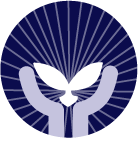Rebecca Sandrok
Name in Japan: Rebecca (Becky) Fittz
Other places lived since Japan: Wheaton, Illinois
Instrument studied in Japan: Violin
Dates in Japan: I grew up in Japan 1952-1968. I returned for teacher training in Matsumoto June 1969- July 1970 Years and locations of workshops with Dr. Suzuki that were outside of Japan: American Suzuki Institute, Stevens Point, WI, c. 1972 and 1976. I was his translator in 1976 and coached children he taught in demonstrations for American teachers; Wheaton College Suzuki Program, which I founded, hosted the tour group c. 1972; two Suzuki Conferences in Chicago, a Teacher Trainer Conference in Ohio, and one in Boston.
Memories
Since I was a Suzuki student of Mr. Harry Makino in Yokohama, Japan from 1958 to 1968, I participated from childhood (8yrs old) in annual All-Japan Concerts even before having them in the Budokan. I was always impressed that Suzuki-sensei listened to and commented on my graduation tapes, and, of course, I was so happy to receive the certificate at the concert. As a child I was embarrassed to be harassed by Japanese and American reporters, but I and three others stood out with our light hair. My older sister Lillian, and two Hestikind sisters, Ruth and Elaine, were the only Caucasian children, but we all spoke Japanese fluently. Perhaps it was due to Suzuki-sensei’s vision to spread his ideas to the world, but he always gave us a little memento as encouragement—a small doll, a Japanese top, a wooden rickshaw. What a heart he had!
I remember the concert when Pablo Casals wept in delight over the beauty of all of us playing the Bach Double together. I was moved but didn’t quite understand at the time how special that must have been for him.
I remember John Kendall coming to watch Mr. Makino teach. Mr. Makino spoke English quite well, as one of his parents was English. I think that was in 1962 or 1963. Then in 1966 or 1967, many American teachers came to observe. I felt heavily obligated to perform very well! In the summer I performed the Mozart A major Concerto, 1st movement, at the summer school student recital. Years later I asked Hiroko Driver, who was there, if I played as well as she recalled. To me, my nerves took over, so I was unaware—not yet an artist, but well trained.
I returned to Matsumoto after my freshman year of college because my violin teacher, Mr. Harold Newton, a violist with the Chicago Symphony, was wanting me to conduct a workshop demonstrating with seven students whom he had asked me to teach in the Suzuki way that year. As a child, I had watched many lessons both below and above my playing level because we learned in master class-style lessons. So that freshman year, I taught by mimicking what I had seen for nine prior years. But when Mr. Newton wanted me to take it to his colleagues in the Chicago Symphony, I knew I needed more formal training in Matsumoto, and Mr. Makino was very pleased to recommend me.
Miyasaka Mitsuko-san set everything up for me. I roomed with Tanabe Hiroko above the Ito’s home halfway to the hot springs and rode the bus to the Institute. I was actually surprised to learn that the usual term of study was two years. As I had taken just one year leave of absence from my Wheaton Conservatory studies, I asked Suzuki-sensei if I should ask the school for another year to fulfill my teacher training. He said that he had known me from childhood, I spoke Japanese fluently to understand everything, America needed me sooner than later, and he would push me to finish in a year. I did my practice teaching in March, April, and May, while one of the teachers at the Kenkyukai took maternity leave, and graduated in mid-June 1970.
During my time daily with Suzuki-sensei, he gave me vision, excitement about influencing the lives of children for good, and an authentic taste of what it meant to really nurture by love—I had to step out of myself and really serve others, following his example. His plan for everyone was to accept them where they were and work to make them better in spite of any and all difficulties. He said to me, “A Suzuki teacher must strive to work with any student. There is no excuse for failure on the part of the child. The teacher must find a way.”
Photos in Japan
Annual Teachers Conference, spring of 1970:



On the day of Certification in Suzuki-sensei’s studio:


